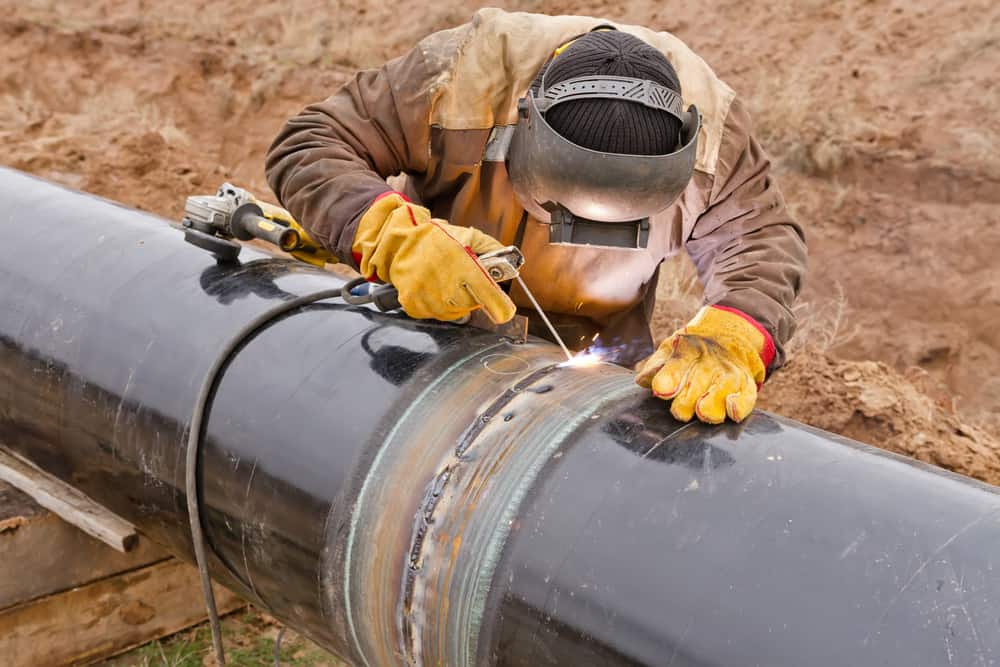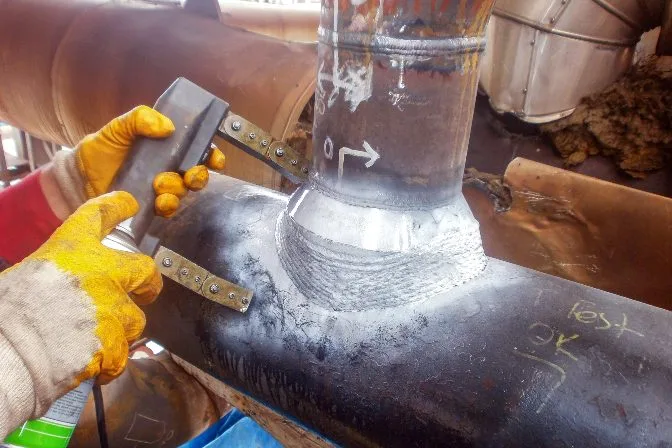Reputable Houston Welding Inspection for Conformity and Safety Specifications
Reputable Houston Welding Inspection for Conformity and Safety Specifications
Blog Article
A Comprehensive Guide to Comprehending Just How Welding Inspection Functions: Methods, Standards, and Finest Practices for Quality Control in Metal Manufacture
Understanding the intricacies of welding evaluation is critical for keeping the integrity of metal construction. Executing best methods can substantially enhance high quality assurance procedures. The landscape of welding inspection is not without its challenges.
Relevance of Welding Inspection
Although welding is an important process in various sectors, its honesty directly influences the safety and performance of frameworks and parts. Efficient welding assessment is crucial for determining defects that could endanger the top quality and resilience of welded joints. This process makes sure adherence to established specifications and requirements, which are crucial for preserving structural integrity and functional integrity.
Welding inspection serves numerous functions, consisting of verifying that the welding process has been implemented correctly, examining the quality of products utilized, and confirming that the ended up product meets governing and market standards (Houston Welding Inspection). Via extensive assessment, potential concerns such as porosity, fractures, and insufficient combination can be identified early, mitigating and avoiding pricey repairs safety dangers
Additionally, consistent welding inspections foster confidence among stakeholders, consisting of engineers, clients, and regulatory bodies, by demonstrating a dedication to quality control. The importance of welding inspection can not be overemphasized; it is integral not only for compliance with lawful needs but also for boosting the overall efficiency of bonded frameworks. Ultimately, a robust welding assessment program is a positive action that safeguards against failures, guaranteeing the durability and reliability of welded parts in their designated applications.
Typical Welding Inspection Methods
Visual inspection is the initial line of defense, permitting examiners to determine surface area issues such as fractures, undercuts, or incomplete fusion. Radiographic screening utilizes X-rays or gamma rays to expose interior problems, making it suitable for complex welds. Ultrasonic testing utilizes high-frequency acoustic waves to discover subsurface problems, supplying exact measurements of weld integrity.
Magnetic bit testing works for ferromagnetic products, highlighting surface area and near-surface stoppages when fragments are put on a magnetic area. On the other hand, dye penetrant screening utilizes a fluid dye to expose surface-breaking defects, making sure that even the smallest defects are identified.
Each strategy has its staminas and restrictions, usually requiring a mix of approaches for comprehensive assessment - Houston Welding Inspection. By using these inspection strategies, quality control in metal construction is accomplished, ensuring that bonded structures fulfill security and performance criteria
Market Specifications for Welding


The American Welding Society (AWS) and the American National Standards Institute (ANSI) are two popular organizations that develop welding standards. AWS D1.1, as an example, lays out the demands for welding steel structures, while AWS D1.2 concentrates on light weight aluminum. Worldwide, the ISO 3834 common addresses top quality requirements for blend welding, supplying a structure relevant throughout national boundaries.

Ideal Practices for Top Quality Assurance
Quality assurance in welding is critical to accomplishing durable and safe constructions. Establishing a comprehensive top this website quality administration system (QMS) tailored to the particular welding task is vital.
Routine training and accreditation of welding workers are essential for preserving an experienced labor force. Continuous education and learning on the most recent welding methods and modern technologies ensures that inspectors and welders are well-informed regarding present criteria and methods.
In addition, carrying out pre-weld examinations to find out examine products and equipment can prevent defects before they take place. Houston Welding Inspection. Throughout the welding process, real-time tracking and documentation of welding specifications assist identify incongruities immediately. Post-weld evaluations should involve comprehensive evaluations making use of non-destructive screening (NDT) techniques to make sure the stability of the welds
Moreover, preserving clear communication amongst staff member advertises a society of high quality. Routine audits and reviews of the welding procedure assistance identify areas for enhancement. By sticking to these best methods, organizations can attain ideal quality control, ultimately causing boosted safety and performance in steel manufacture tasks.
Difficulties in Welding Examination
Although welding evaluation is essential for ensuring architectural honesty, it offers a range of challenges that can make complex the analysis procedure. One considerable difficulty is click resources the variability in welding strategies and materials used, which can influence the uniformity of weld top quality. Various welders might employ varying methods, leading to discrepancies that inspectors demand to examine and recognize.
Another difficulty entails the discovery of defects. Non-destructive testing (NDT) approaches, such as radiographic and ultrasonic screening, can be complex and call for knowledgeable professionals to analyze outcomes accurately. False positives or negatives can take place, possibly resulting in costly rework or endangered safety.
Additionally, the presence of ecological variables, such as temperature level and moisture, can affect the honesty of welds and the performance of inspection methods. Examiners must also navigate the regulative landscape, making certain compliance with market requirements, which can differ by territory and application.
Final Thought
In verdict, welding examination plays an essential duty in ensuring the honesty and safety and security of steel construction. Utilizing a selection of examination strategies, sticking to recognized sector criteria, and carrying out reliable quality management techniques collectively enhance the integrity of bonded structures. In spite of the obstacles faced in the evaluation procedure, a dedication to constant improvement and adherence to ideal practices can considerably boost the quality control framework, fostering better self-confidence among stakeholders in the welding market.
Efficient welding assessment is important for recognizing problems that might endanger the quality and durability of bonded joints.Furthermore, regular welding inspections foster self-confidence amongst stakeholders, consisting of designers, clients, and governing bodies, by showing a dedication to quality guarantee.The American Welding Culture (AWS) and the American National Requirement Institute (ANSI) are two famous companies that develop welding standards. During the welding procedure, real-time surveillance and documentation of welding parameters assist recognize incongruities instantly. Regardless of the obstacles dealt with in the evaluation procedure, a dedication to constant renovation and adherence to ideal techniques can dramatically strengthen the quality assurance framework, promoting higher self-confidence amongst stakeholders in the welding market.
Report this page